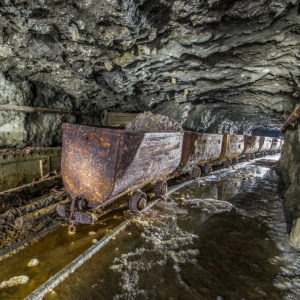The second-largest country in the world by landmass, Canada, has a vast wilderness and is blessed with an abundance of natural and mineral resources. Even so, it seems like a stretch to say that it possesses three-quarters of the world’s minerals. Why then are 75 percent of mining companies based in Canada? The answer is metal streaming, a unique financial arrangement that makes Canada a prime spot for mining companies to make public offerings, even if they do not intend to operate mines in Canada. In attracting mining businesses, Canada draws off reserves, prices, financing, exploration, and capital investment, a combination which other countries, including the U.S., are not able to match. Just looking at the numbers, Canada’s involvement in the mining industry is staggering. The Toronto Stock Exchange and Toronto Venture Exchange accounted for $12.5 billion, or 40% of global mining equity capital in 2011 .
Canadian law makes both listing mining companies and complying with federal regulations less burdensome than in other financial centers, including London and New York. Even though each of the 13 Canadian territories and provinces has its own securities commission, these authorities coordinate in order to ensure that Canadian financial markets remain in harmony. In part, this reflects Canada’s relatively open policy towards foreign mine ownership.
While Canada can offer access to free trade agreements and a stable legal system, another factor that makes it attractive to mining companies is its financial system. Opening a new mine incurs high upfront costs which are intended to be repaid over the course of the lifespan of the mine, which often extends for 30 years or more. Since 2004, Canadian law has allowed for what is called a metal streaming transaction.
“A metal streaming transaction is essentially a long-term agreement between an investor and a mining company for the purchase and sale of metal,” explain
For investors, metal streaming agreements provide the opportunity to purchase metals at a lower, fixed price. As the mine delivers metals for the previously-agreed upon fixed price, the difference between that price and the market value of the metals is deducted from the value of the original loan. Upfront payments on deals like this range from as little as $4 million to as much as $1.9 billion.
“A metal streaming transaction is a relatively fast and low cost route to securing non-dilutive financing. It is also a way to monetize the value of future production of a metal by-product, which value may not otherwise be fully recognized by the market in the mining company’s share price,” conclude Taplin and Deutscher.
In essence, metal streaming allows Canadian companies a route to capitalize on their yet-to-be exploited mineral resources, with the arrangement working similarly to a futures agreement. This makes it easier for Canadian companies to raise the money necessary to begin mining. In other countries, including the U.S. and Australia, which also have rich mineral deposits, companies need to find sources of capital without drawing on the value of the yet-undeveloped claim. This poses a particular hurdle for smaller companies, which may lack other working mines that could be used as a source of capital.
Unlike loans, metal streaming agreements are not considered debt. In the past several years, major mining companies have been using this financing method to repay outstanding debt. In just two years, between 2015 and 2016, four companies, Vale, Glencore, Barrick Gold, and Teck Resources, each sold metal streaming agreements on existing mines that were worth more than $500 million.
Before metal streaming agreements were allowed, mining companies generally operated on royalty agreements. Royalty agreements give investors a share in the future profits of a mine, but don’t involve the actual transfer of metals themselves.
“Streaming deals are particularly popular with the precious metal by-products of mines that mainly produce a base metal such as copper, since markets frequently undervalue these precious metal reserves,” writes Moody’s in one global credit research report. They note that this arrangement works particularly well for commodities like copper, where prices fluctuate dramatically.
Tax laws are of increasing importance for mining companies as an increasing number of countries are turning to the industry as a potential source of new revenue.
Financing options are of particular concern for mining companies for the past several years. Falling commodities prices have lowered profits even as a legacy of cost inflation from the previous boom era has left input costs high. Opening a new mine requires both a development plan extending across the projected lifespan of the mine, which could be up to several decades, and the capital to work for a period of months or even years before minerals can be sold.
Major mining companies based in Canada include Barrick Gold, the largest gold-mining company in the world, PotashCorp, the world’s largest fertilizer company, as well as companies like Teck Resources and Agrium Inc., which operate mines in Canada, the U.S., and around the world. These companies generally pay royalties and fees in the areas where they operate mines, but pay corporation taxes under Canadian law, allowing Canada to reap the benefits of being an industry hub.

